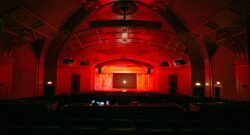Labour Force Survey
Employment among arts and entertainment industries falls back to square one
According to the Labour Force Survey, employment among performing arts, spectator sports and related industries declined for a third consecutive month in January 2022.
Employment in arts and culture industries, February 2021
While employment rebounded across the Canadian economy in February, the live performance sector took another dive. Self-employed artists and technicians, who had managed to hold on thanks to emergency support, are most severely impacted.
2020: The Year One in Four Arts Worker Lost Their Job
The COVID pandemic took a particularly heavy toll on the arts sector in 2020. One in four arts, entertainment and recreation workers lost their job in 2020, compared to 2019. That’s 114,400 artists, technicians, marketing staff, arts administrators and other cultural workers who could no longer earn...Read More
Employment in arts and culture industries, December 2020
Employment declined in most industries in December, including the arts sector and in cultural industries in December 2020.
Employment in arts and culture industries, November 2020
Last week, Minister of Finance Chrystia Freeland announced that certain “fiscal guardrails will help [the government] establish when the stimulus will be wound down.” One of these indicators – total hours worked – is particularly fitted to account for under-employment in sectors, such as the arts, t...Read More
Employment in arts and culture industries, October 2020
New public health restrictions ordered by provincial governments in response to spiking COVID-19 cases impacted many industries in October. Those that were already among the hardest hit reported further job losses.
Employment in arts and culture industries, September 2020
On September 22nd, nearly 700 venues lit up in red across the country to raise awareness of job losses among live event workers. As a matter of fact, all employment indicators in performing arts and entertainment industries once again fell in September.
Employment in arts and culture industries, August 2020
While the Canadian economy is slowly recovering, another 6,600 live performance workers lost their job in August.
Employment in arts and culture industries, July 2020
Nearly all arts, culture and heritage industries showed signs of recovery in July 2020. Employment in performing arts industries is still 23% below pre-COVID levels, but hours worked continued to rebound.
Employment in arts and culture industries, June 2020
Performing arts companies saw the largest decrease in total hours worked in June 2020: -73,5%.











